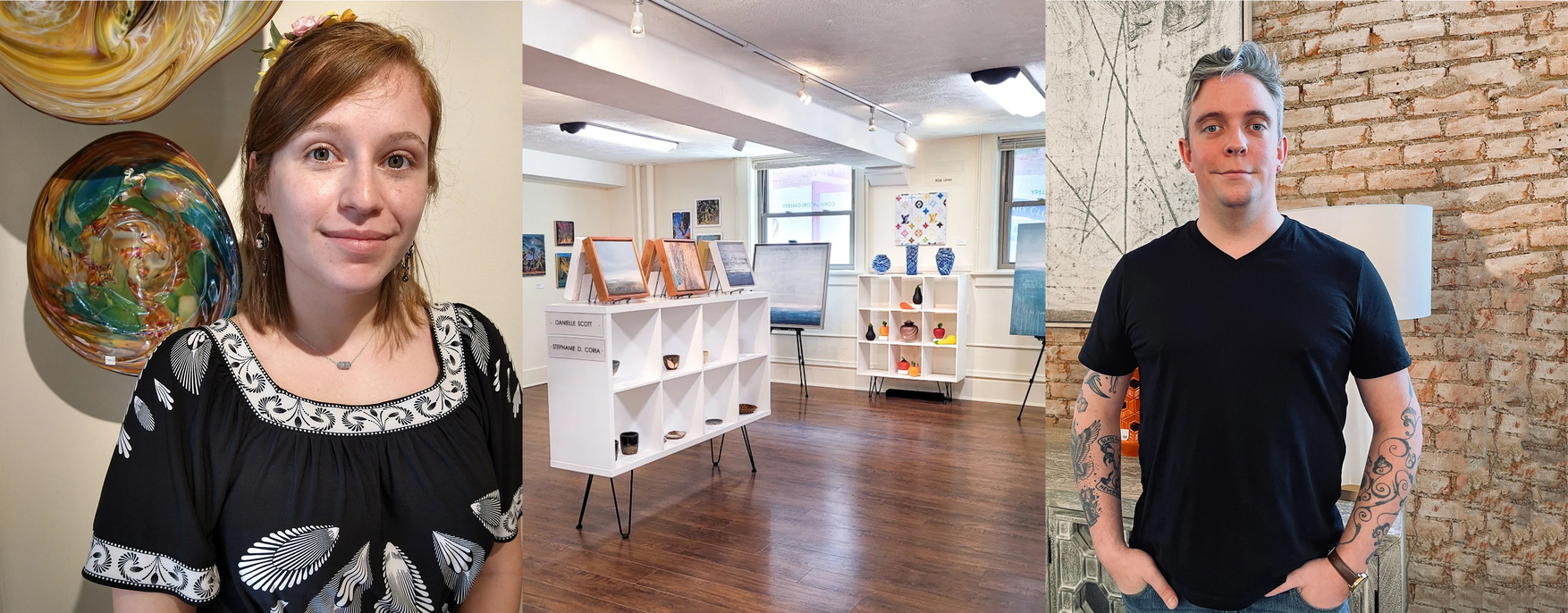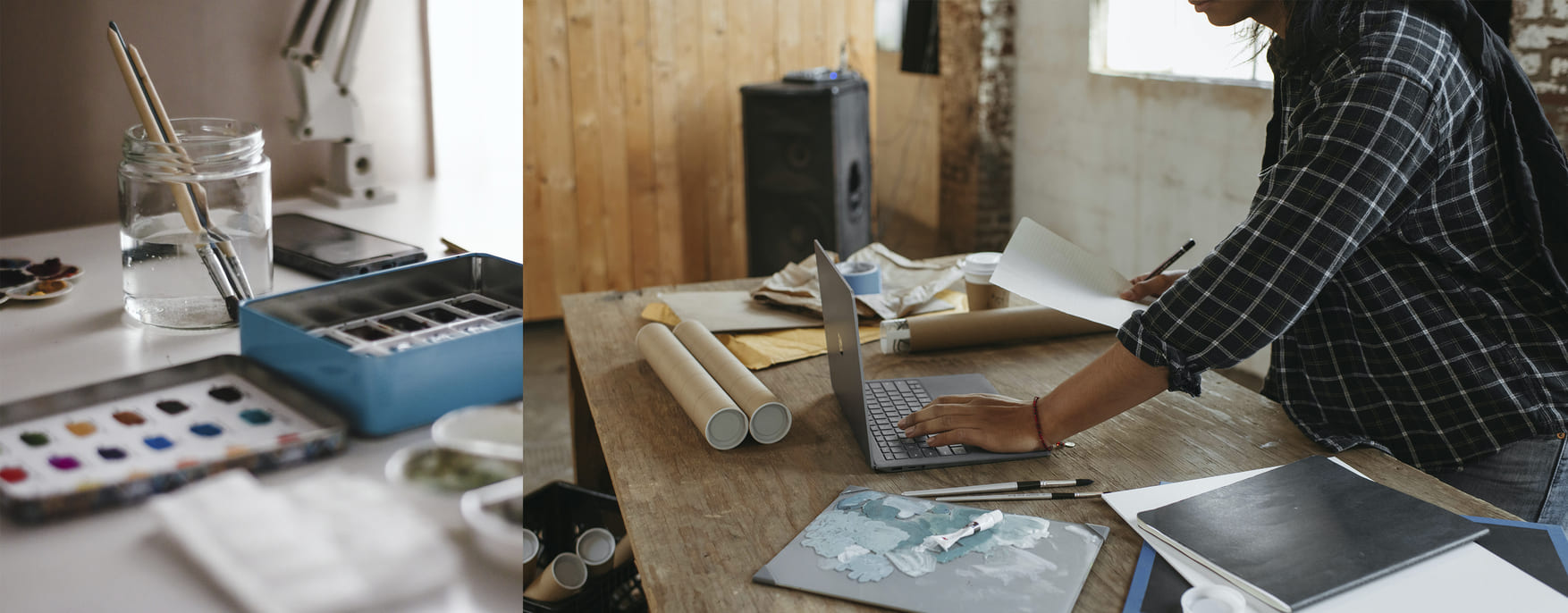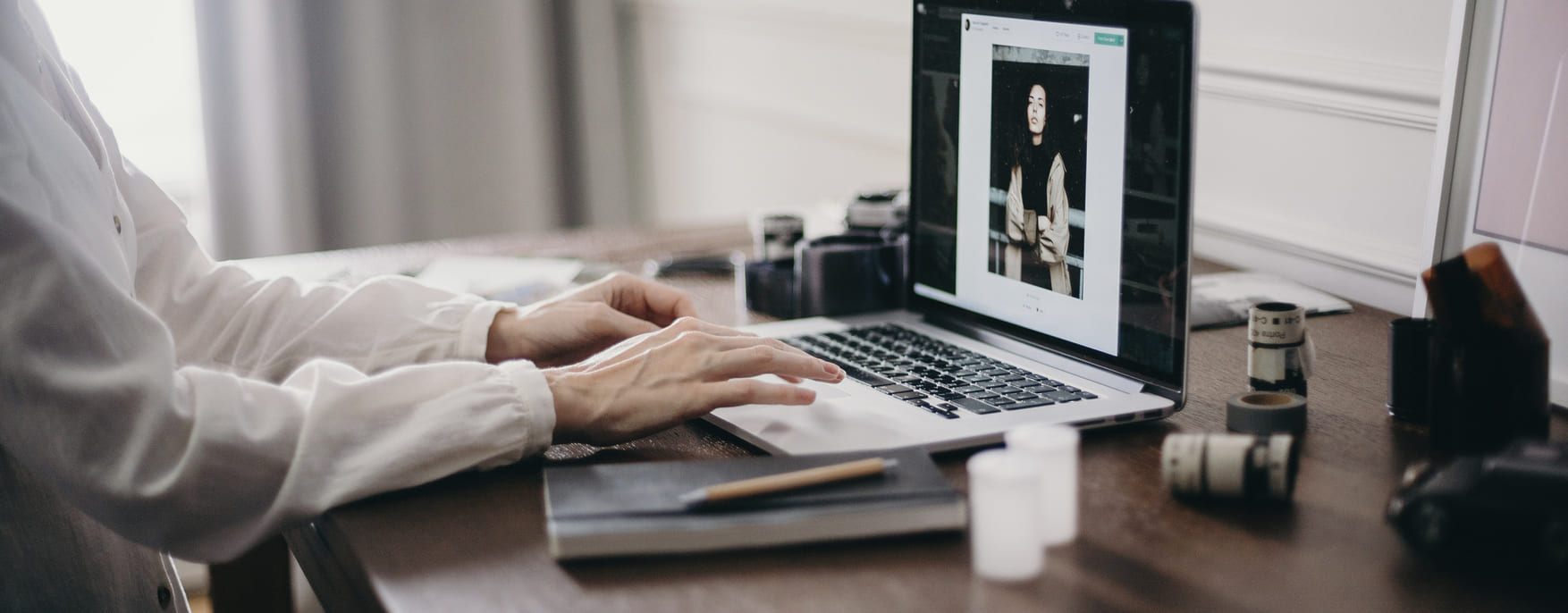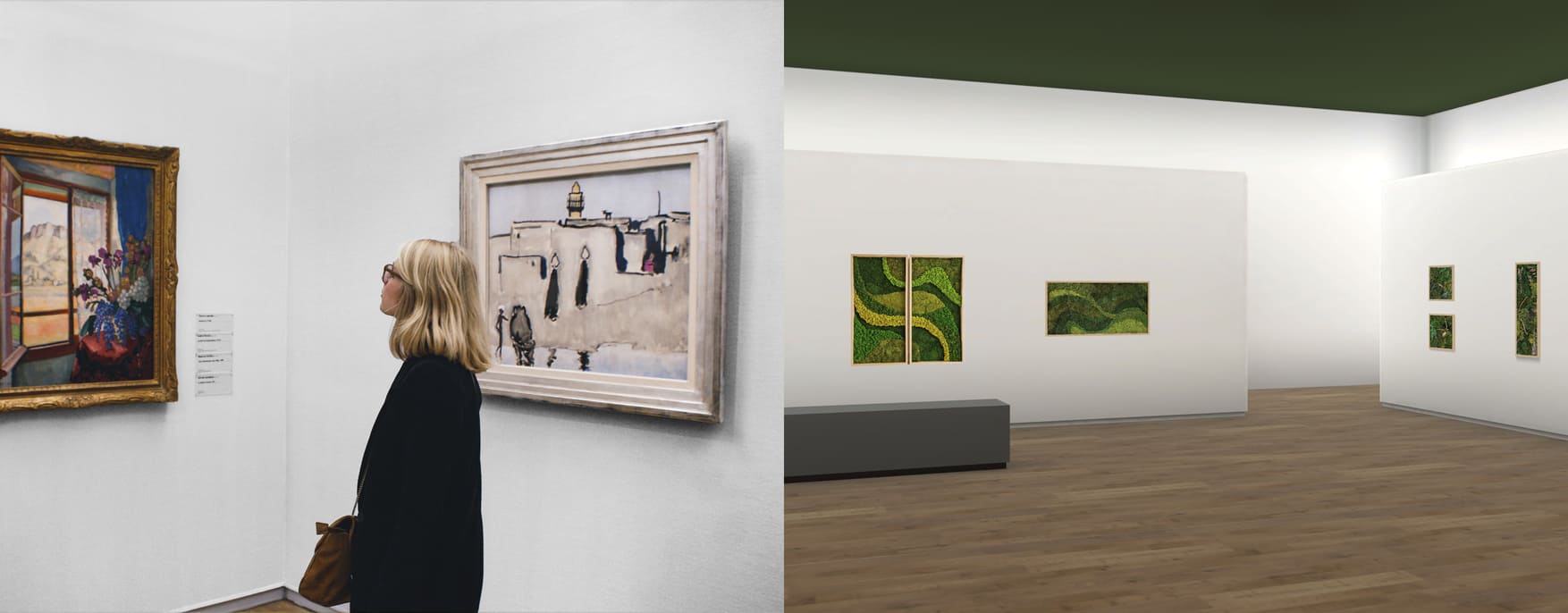Have you ever heard the phrase “Think global, act locally”? That’s kind of the motto and the driving force behind the Pennsylvania-based Coria Jacobs Gallery, which started with the intention to bring contemporary art to their community and expanded well beyond its frontiers with the help of art marketing tools like virtual exhibitions.
We had the opportunity to sit down and talk with owner and artist Stephanie Coria about how the gallery came to be, the strategy that has helped them build connections inside and outside their community, and their vision for the use of social media as a tool to expand their reach. Keep reading to learn more about this gallery and the creative takes they have taken to promote their work and the one from the artists they represent.
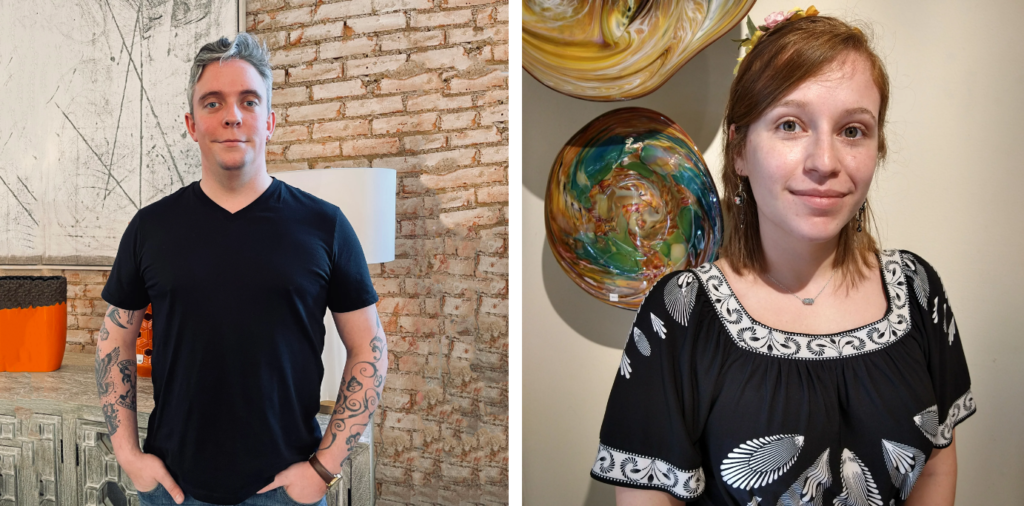
Would you share a bit of your background with us?
My name is Stephanie Coria. I own the Coria Jacobs Gallery with my fiance and partner, Reid Jacobs. That’s where the name comes from. It’s my last name and his. We’re located in Franklin, Pennsylvania, which is not too far from his hometown. We thought it would be a great opportunity for us to bring art to the local community that he grew up with.
I have worked with museums and art galleries since about 2015. I’ve done a little bit of everything when it comes to working with art from cataloging, digitizing, photographing, creating, and helping other artists put their art on the web for other people to see and buy.
Reid is a professional glassblower, and he’s worked with other galleries and other studio artists for several years. When we met, we both shared a huge passion for art creating, and working in galleries. After several years of working for other artists, we decided we wanted to open up our own gallery and share our work and the work of others that we really admired.
We’ve actually brought contemporary art to a community that didn’t know it was something that they were interested in. Because around here, traditional landscapes and animal realism are what they’re used to. We brought contemporary and we had so many visitors come in and say “Wow, I had no idea that something like this could come to Franklin”. We’ve had really positive feedback from our local community.
When we started using ArtPlacer to create these Virtual Exhibitions, it helped us reach a wider audience because we are in a pretty rural area. We’re able to use those online art shows in order to kind of foster engagement and share with a wider reach.
I have family that lives in Mexico and they’ve reached out to us and said “We’re so excited to be able to see your tours and see the art, even though we can’t come in person”. We have artists from all across the US, from Texas, Georgia, North Carolina, South Carolina, and of course, Pennsylvania. So, even our out-of-state artists can see their work in a virtual setting if they can’t come to the gallery in person, and then they can share it with some of their followers as well. It’s been absolutely fantastic to be able to combine on-site and virtual experiences.
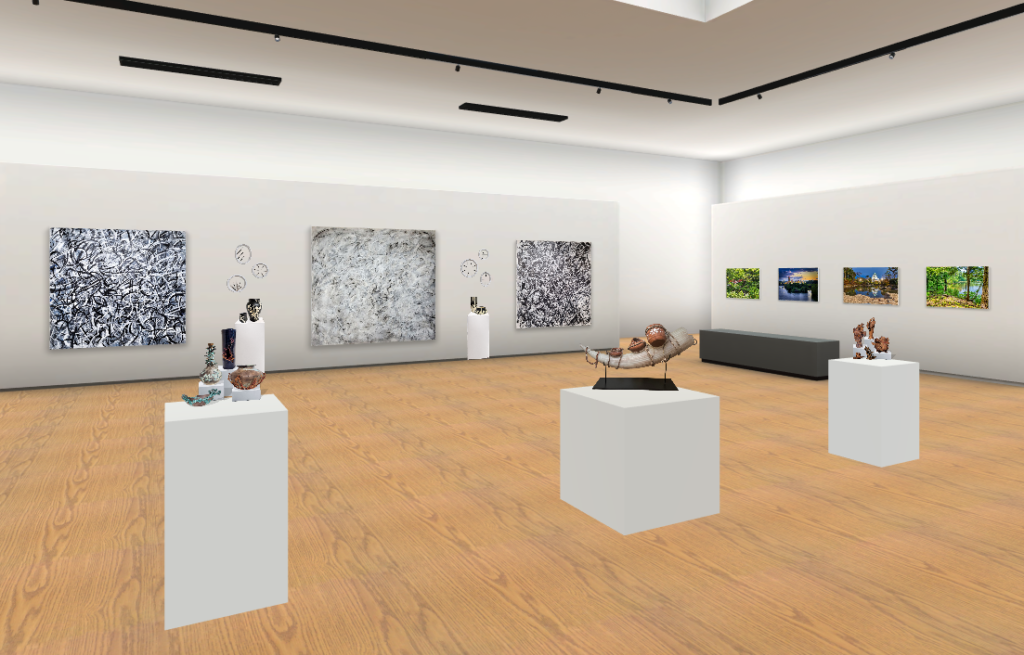
How was the curatorial process, particularly, when bringing new ideas and concepts to a local setting?
That’s something that we’re asked all the time: how did we find the artists that we represent? It started with us showing our own work. I do ceramics and Reid, does glass blowing. We first reached out to art friends that we’ve worked with in the past, or we’ve always admired their work.
We had a few people like Jennifer Lashbrook who’s based in Dallas, we’ve worked with her in the past and said “Hey, we’re opening our gallery. Do you want to show with us?” And most of the artists were like “Absolutely, we’ll send you some work”. Then after we opened, a lot of the Pennsylvania artists saw us through Instagram or Facebook, and they reached out to us asking if we were still accepting artists.
I do have a space on our website for artist applications, so we can get contact info and portfolio info. We’re always reviewing it because as the needs of the gallery change for different exhibitions, we’ll kind of look through and see if we are missing anything or if there is a media we don’t have represented. I think that’s something that really encourages new artists that haven’t shown before because if it feels like a good fit for the gallery, it gives them a chance to gain exposure.
We also work closely with those emerging artists that haven’t shown before. Kind of give them some feedback on their portfolios, or you know, we can give them tips for how to improve. I think that’s something that is kind of unique to us.
A view into Coria Jacobs Gallery in situ exhibition.
Your exhibition has an amazing variety of mediums and art genres represented. How did you manage to create a narrative that opened up a space for everyone?
Sometimes in the art world, there’s a stigma that you have to be a painter to be a fine artist, and coming from more of a craft art background, with me being a ceramic artist and Reid being a glassblower, sometimes these sculptural elements are kind of pushed aside a little bit.
I really like to put everything on the same plain: a painting, a photography piece, and a sculpture piece. They all have the same value as art. The more unique pieces come from artists being able to express themselves in their specific medium. I think it’s just a new way to show that everything deserves its space. We juxtapose different pieces, you can set different artists and different artworks next to each other, and it doesn’t compete, it actually complements. That’s something that is a really difficult thing to achieve but it really works here.
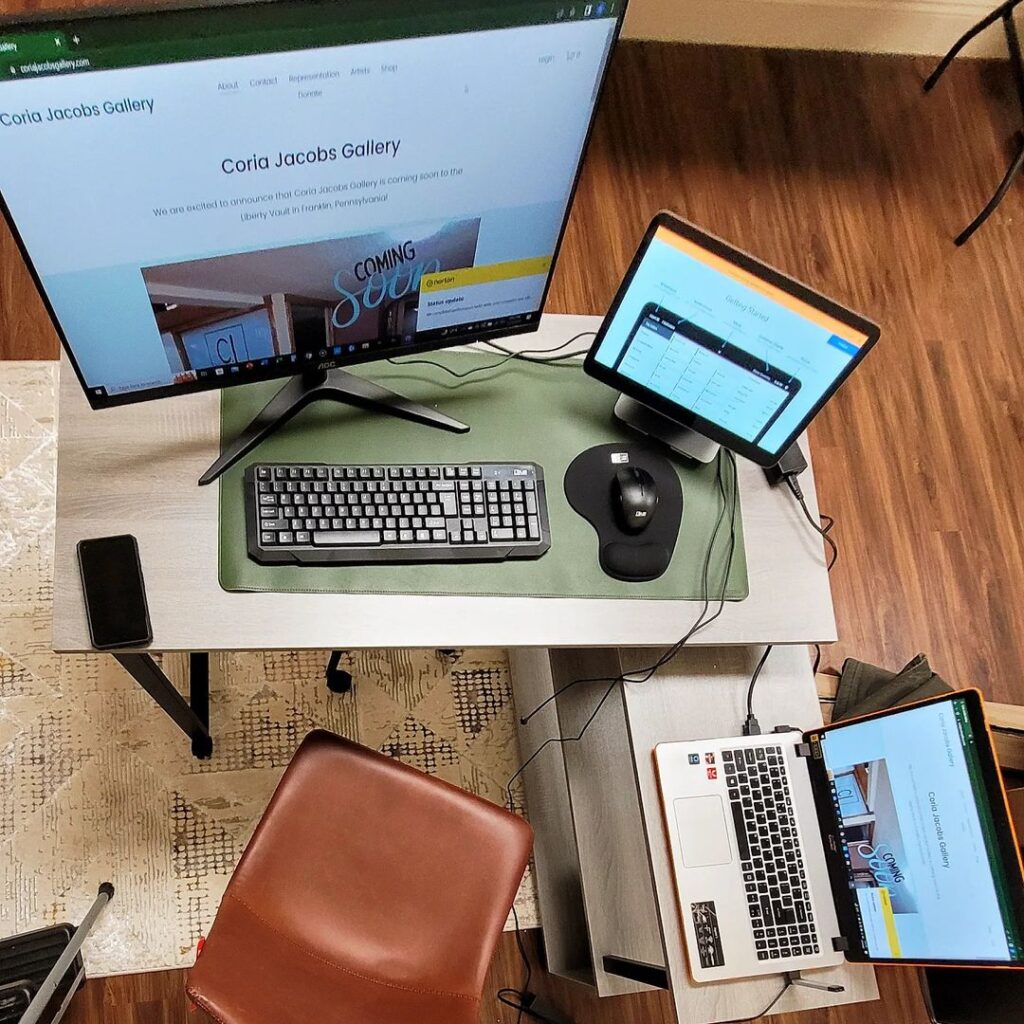
How was the process of defining how you were going to develop the online presence of the gallery and how to make it happen? Did you fear getting lost in the trends?
I grew up with the MySpace generation. We are currently in an area where Facebook is king. Most of our local community and even the local businesses all focus on Facebook to interact with their audience. There is kind of a hard push to update and create a website and get onto Instagram even.
I can relate to that, when MySpace was really big and Facebook just started, I had a hard time making the switch because it’s a new technology. You have to teach yourself those new skills. There is sometimes a gap in knowledge, and it’s something that’s hard to overcome, but when it comes to using social media or some sort of online platform, I think one of the biggest things is to stay true to yourself. If you’re not somebody who likes to do videos, then maybe TikTok isn’t for you.
I don’t feel like you should have to go outside of your comfort zone until you’re ready for it. We don’t have a TikTok, and we don’t really jump on the trend, we just really try to stay true to ourselves and focus on the artwork or focus on the different artists that we represent.
Sometimes if we don’t have anything that we want to post, we’ll share something that one of our artists posted. I think you can try to engage with your audience by using what they use but still maintain your own brand. It’s a hard thing to do and to balance, but once you find your niche, it just clicks.
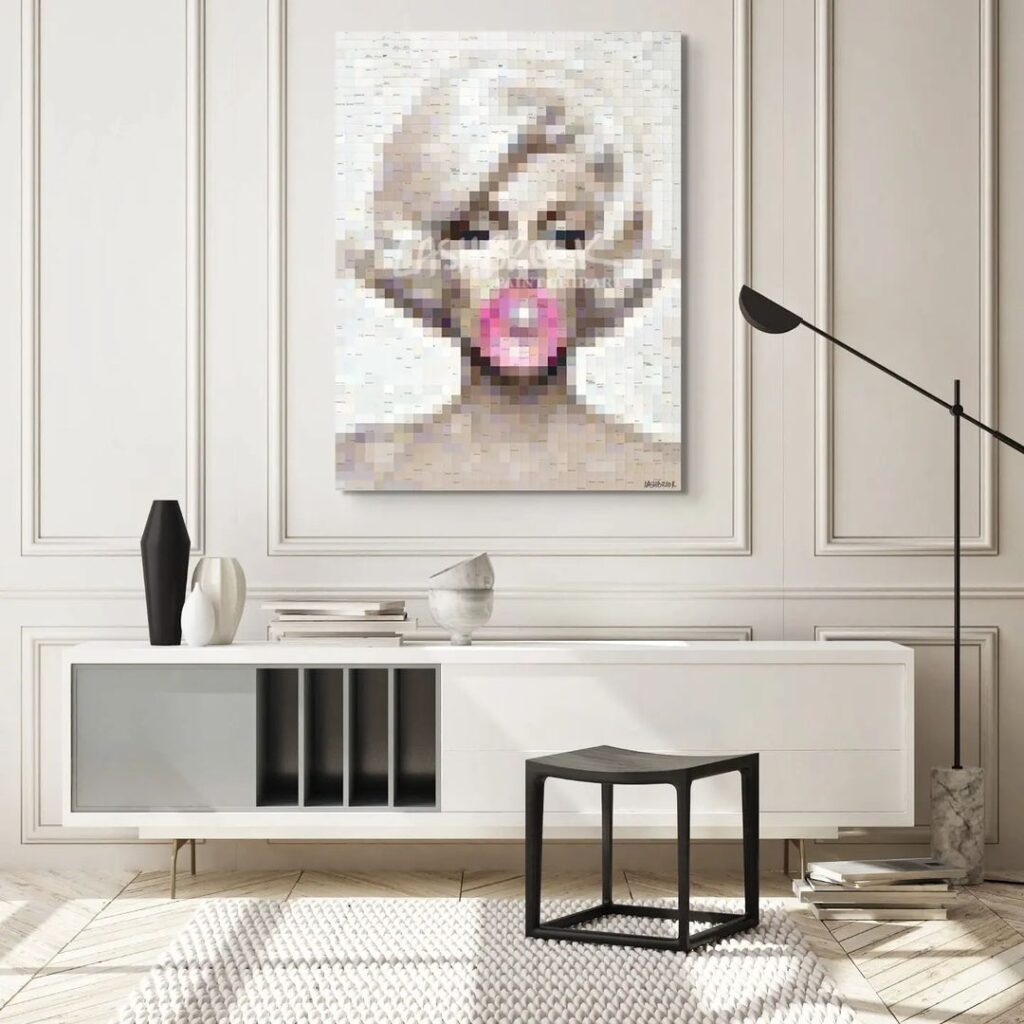
And now that you have your gallery online and a whole strategy behind it, what does a day in the life look like for you?
It varies from day to day. When you are a gallery owner or you work in a gallery, you do wear many hats. One of my first roles was being a Gallery Assistant, but you don’t really know what that entails, you are doing everything you can to make the gallery run. You’re not just assisting the owner, you are providing content, working on the catalog, cleaning the gallery, or making sure that the art pieces are displayed. You’re curating. You’re doing all of these things, and there’s really no job title in the art world that tells what it is that you do.
When you tell people you are a gallery owner and what it is like, all of your different roles, it just blows people away. Being on the owner’s side of things or being in a managerial position, you do have to do a lot more. And there are definitely days when I am just glued to my computer because I am uploading images, doing photo editing, working on our website, and trying to post events.
But I will say it’s always the first initial setup that takes the longest. You will dedicate so much time just trying to get things in place, but once you do that it gets a lot easier, because now you just have to maintain it. Honestly, the hardest part is dedicating a block of time to just get it in place and ArtPlacer has really helped us with that because I can upload all of the different artworks, and input the metadata of who made it, and what size it is.
My favorite thing is to do Room Mockups because it gives our audience, and it gives different people the opportunity to see what the artwork would look like if they put it in their living room. It just helps with that visual connection, because not everybody can have that 3D brain where they can see something and imagine it in a space. Room Mockups really help with that.
Even with our Virtual Exhibitions, they help you kind of navigate and see what the art piece would look like next to something else. We’re still kind of navigating and learning more about what the platform has to offer. The next thing we have going on is trying to plan for art fairs with the Art Fair Planner.
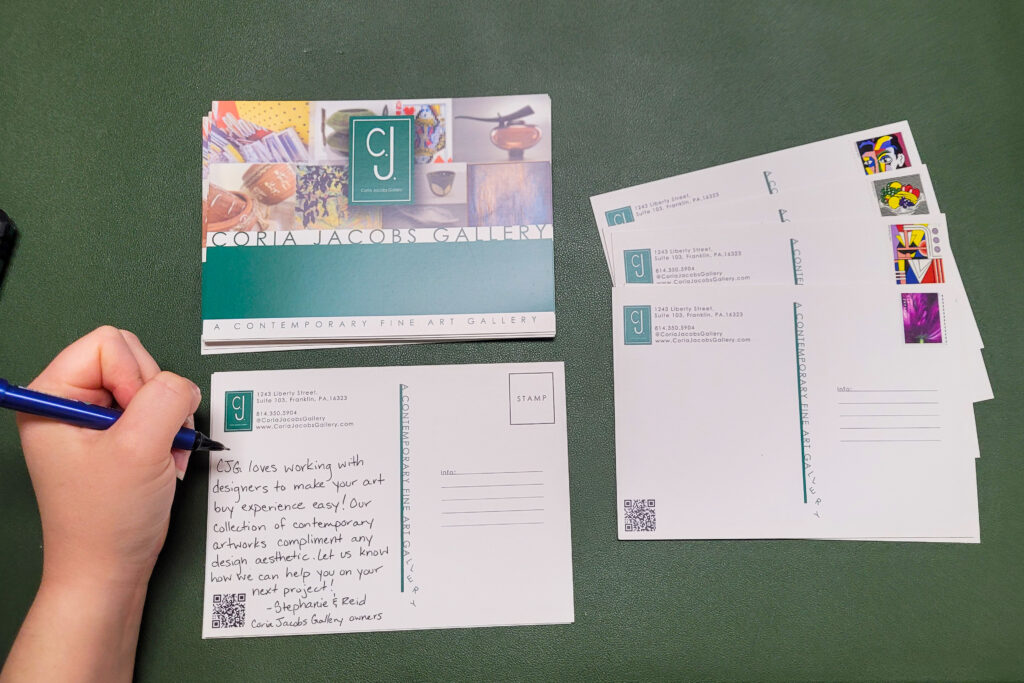
There is this concept that grew with the internet, blogs, and social media, that everything that once was local is now universal because you can access those experiences online. How was the process of bringing your in situ exhibition to the digital world?
Being able to utilize social media has always been one of the biggest things. Because, I can share it with people that are all across the world and I can’t even put into words how incredible that is! Over the past couple of years, artists have flocked towards Instagram, to share images and to share stories.
When it comes to trying to get out of our just our area, one of the ways is through print with a local or a wider reach like newspapers, different articles can be written. We had an article written by the Derrick News Herald, which highlighted our exhibition when we were just starting it. That was really exciting for us because it kind of reached a little bit further out than just our local Franklin people and it started to spread like wildfire.
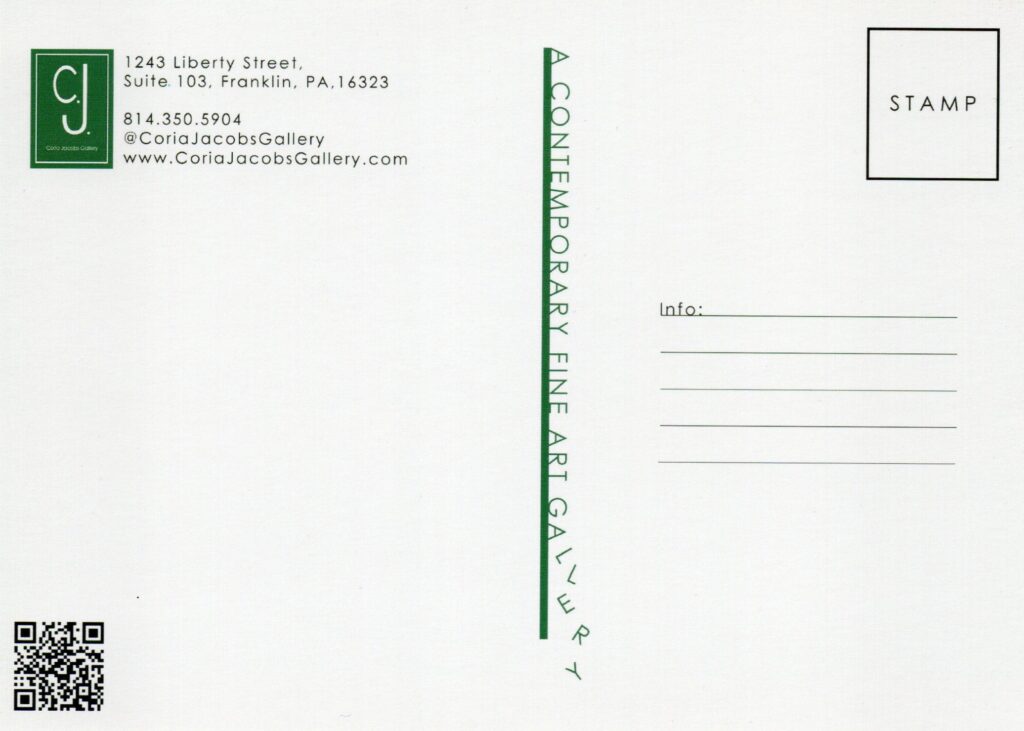
Something that I’ve learned is to make a personal connection. People are so inundated with emails that usually if you send out some sort of email campaign, the likelihood is that it is going to end up in a spam box. Try and interact with people, especially if you’re trying to target a specific audience, one thing we did was write a personal postcard and mail it to them. There’s just something so much more personal about writing a letter or writing on a postcard that it creates a sense of a personal invite.
There are some interior designers that we’ve wanted to work with all across Pennsylvania. And we’ve started writing postcards to say “We’re in Franklin and we’d really like to work with you and if you can’t come to our gallery, we’ve got a virtual exhibition”. That’s a way that we can start reaching out, growing our audience, and kind of meeting some more people.
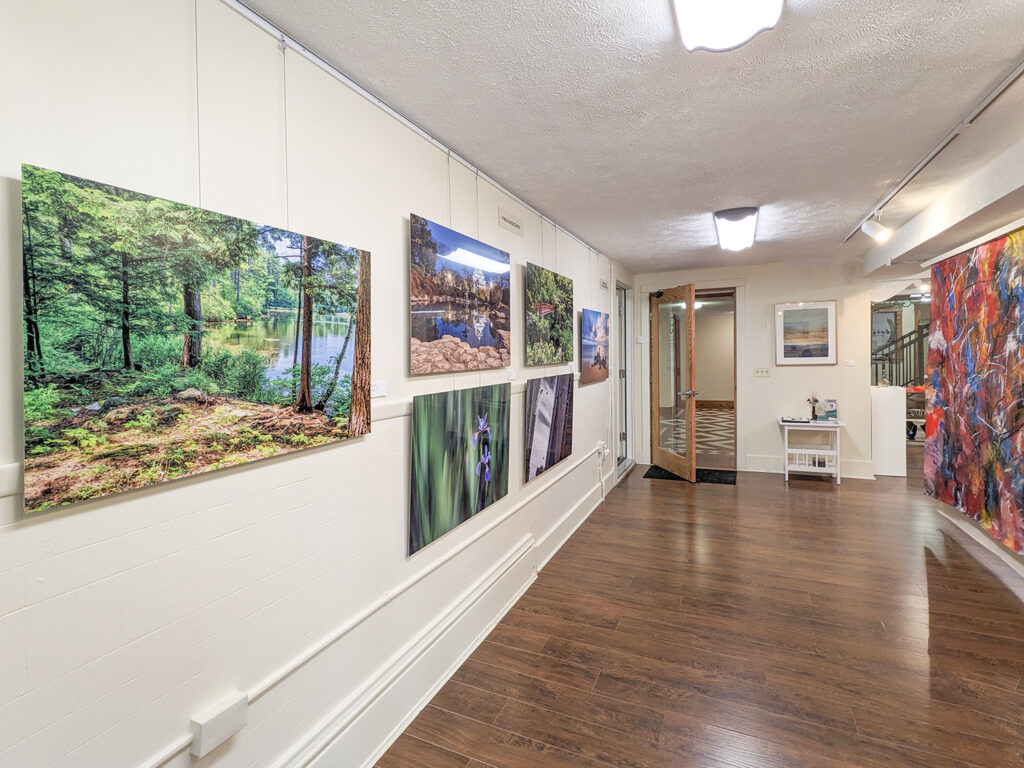
What would you say is the biggest gain of using this art marketing and digital tools like ArtPlacer as a gallery owner?
I think one of the most important things about using something like ArtPlacer is being able to play with Room Mockups, even if it is new artists or people who don’t really know how to get their art out there. That tool gives you a different understanding of the art world. Are you creating art for yourself? Are you creating art for others? How do you want your art to be received?
Being able to use these tools takes you to that next step of being an artist or an art gallery, it pushes you to elevate yourself as a business because that’s kind of what it’s geared for.
Whether you are an artist starting out or an art gallery starting out, being able to use these tools is so important, because when it comes to the art world. we’re pretty limited. Even with online websites, they’re not geared toward artists, they’re geared toward retail stores or restaurants. We’re trying to find our own little pocket and create our own little area.
This is one of the first tools that is just for artists and so it’s so important, so critical to what we do, it’s just key to our success.
Editor’s note: This interview has been edited for length and clarity.
